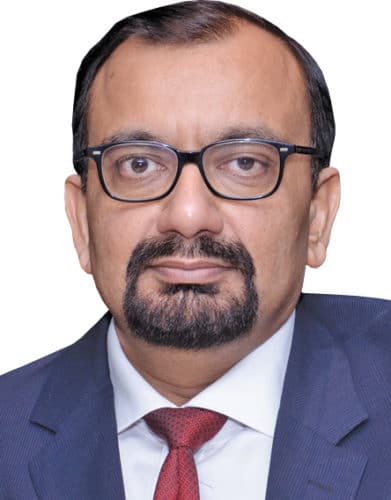5G development and deployment requires test beds to scale and evolve digital connectivity programs such as Make in India and Startup India. Sandeep Kapoor, country head marketing – India and regional head aerospace defence marketing – EMEAI, Keysight Technologies, discusses the 5G vision, its components and required test supports with Deepshikha Shukla of Electronics For You

Q. What is the vision for 5G?
A. 5G will be the next big thing in technology. The vision for 5G is to achieve more than 1Gbps user data rates, anytime, anywhere. The aim here is to have enhanced coverage and spectrum efficiency with high mobility. With massive increase in aggregate traffic, there is a need for low-power Internet of Things (IoT) devices and sensors to reduce 90 per cent network energy usage.
There is also a need to increase device-to-device communication and building end-to-end 5G testbeds.
Q. What are the core elements of 5G?
A. These are as follows:
eMBB (enhanced mobile broadband). It provides 10Gbps to 20Gbps peak, 10,000 times more traffic; macro and small cells; support for high mobility (500kmph) and network energy saving by 100 times.
mMTC (massive machine-type communications). This supports long-range, high-density devices with low data rates (1kbps to 100kbps), having machine-to-machine and asynchronous access.
URLLC (ultra-reliable low-latency communications). It is ultra-responsive and ultra-reliable with less than 1 millisecond (ms) air interface latency and 5ms end-to-end latency.
Q. What are the frequency and bandwidth requirements for 5G?
A. 5G new radio (NR) bands are divided into FR1 and FR2. FR1 frequency ranges from 450MHz to 6GHz. It supports frequency division duplex (FDD), dynamic time division duplex (TDD) and semi-static TDD.
FR2 supports 24.25GHz to 52.6GHz, dynamic-TDD and semi-static TDD techniques. Downlink waveform utilises cyclic prefix – orthogonal frequency division multiplexing (CP-OFDM) technique, while uplink waveform utilises CP-OFDM with discrete Fourier transform OFDM (DFT-s-OFDM) techniques.
CP-OFDM targets high throughput scenarios. While, DFT-s-OFDM targets power-limited scenarios.
Orthogonal multiple access and non-orthogonal multiple access techniques are used. Maximum number of channel carriers (CCs) are 16, with bandwidth of 400MHz. Maximum number of sub-carriers is 3300. And, 4096-FFT is needed, too.
Multi-path transmission control protocol (MPTCP) can combine two or more IP connections together. It allows simultaneous connection with LTE and 5G for the same stream of data. Traffic scheduling between paths is automatic, based on the grade of connection.
In MPTCP, IP paths in core can be different. However, in 5G NR-DC applications, MPTCP paths can be combined at SGW (Cisco serving gateway) or at the application server.
Q. What is the purpose of 5G testbeds in India? Who needs these?
A. 5G testbeds help monetise the outcomes of 5G research projects for building the 5G ecosystem.
These are needed by application and software developers to understand integration issues with 5G network. Telecom operators need these for early understanding of 5G.
Academic institutes require 5G testbeds for research and validation of algorithms and experiential learning of 5G tools, and equipment companies for R&D and stack development.
Q. How can upscaling and upgrading of 5G core be done?
A. Upgradation of 5G core is possible with network slicing and cloud services. It provides benefits such as cost flexibility, reliability and dynamic scalability.
Service-based architecture provides architectural modularity and reusability. Some benefits of network slicing are better customer experience, shorter time-to-market, scalability through design and verification, simpler resource management, increased automation and flexible network.
Q. How is Keysight supporting 5G projects?
A. We have designed SystemVue for 5G NR, vector network analyser (Tx test) for FR1 and FR2, vector signal generator (Rx test) for FR1 and FR2, among others.
We have also successfully measured 5G transmitter characteristics, like base station output power, transmit on/off power and frequency error, and 5G receiver characteristics such as sensitivity level, maximum input level and adjacent channel selectivity.








enough of these so called innovative ideas. 4g has so far doing well. no need of faster networks and a faster extinction of birds . still ?? after seeing netherlands 5g test incident ??